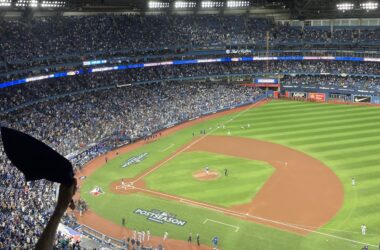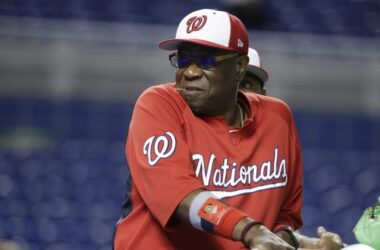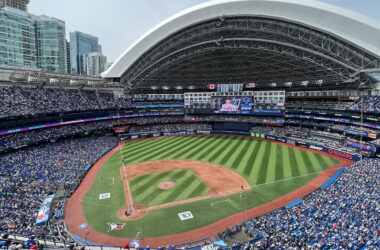On Dec. 9, the day after a social media frenzy where Toronto Blue Jays fans tracked a Shark Tank investor’s private jet from Anaheim to Toronto, thinking that prized free-agent Shohei Ohtani was on his way to sign with the Jays, the reigning AL MVP announced his signing with the Los Angeles Dodgers through an Instagram post. What a time to be alive. The Dodgers signed the two-way star (Ohtani, not the Shark Tank guy) to a 10-year deal worth $700 million—with the majority being deferred to the end of the contract. Ohtani will be paid $2 million annually for the next 10 years, for a total of $20 million until 2033, and $68 million annually for 10 years starting in 2034, for a total of $680 million until 2043. All told, the Dodgers will pay Ohtani $700 million over the next two decades. What’s particularly interesting about this deal is its implications for the Competitive Balance Tax (CBT).
Unlike some other professional sports leagues, Major League Baseball (MLB) does not have a hard salary cap. Instead, teams are forced to pay a tax, colloquially known as the luxury tax or the “Steve Cohen tax,” named after the billionaire New York Mets owner who paid a record CBT of $101 million last season only to miss the playoffs. The 2022 Collective Bargaining Agreement outlines payroll thresholds for CBT purposes. For reference, the 2024 threshold is $237 million. It will increase to $241 million in 2025 and $244 million in 2026. Teams whose payrolls exceed CBT thresholds receive a stern look of disapproval from Rob Manfred and are forced to pay a tax bill on all overages.
The proceeds drawn from the luxury tax are then reallocated to fund MLB Player Benefit Plan Agreements, individual player retirement accounts, and the Commissioner’s Discretionary Fund which is reallocated to clubs––at the commissioner’s discretion. This reallocation is based on factors such as a club’s non-media revenue growth rate, their success in reducing their share of revenue sharing proceeds, and their long and short term efforts to grow their non-media local revenue. Essentially, small market teams deemed by the commissioner to have made an honest effort to sell more hot dogs and foam fingers receive a pat on the back, an “attaboy,” and a share of Steve Cohen’s money.
Back to the Ohtani signing: Officially, the deal is for $700 million over 10 years, which results in an average annual value (AAV) of $70 million. However, the Dodgers will be paying Ohtani $20 million over the next 10 years, meaning the remaining $680 million is deferred money. The contract’s structure has allowed the Dodgers to sign other big ticket free agents such as pitchers Tyler Glasnow and Yoshinobu Yamamoto. After all, they will be paying one of the game’s best players $2 million for the next 10 years, freeing up some cash on the short-term to make some other moves.
For CBT purposes, MLB employs a “net-present value” calculation for deferred contracts. Shohei will earn $700 million in American legal tender over the course of the contract, but the value of money decreases over time. There is a safe assumption that $68 million today is worth more than $68 million 10 years from now. MLB and the MLB Players Association have agreed to apply a discount rate equivalent to the federal mid-term rate on deferred contracts, essentially “converting” future money to its current value. This means that the $20 million Ohtani will earn until 2033 will not be discounted for CBT purposes. The discount rate for this deal is 4.43 per cent, and it is estimated that the net present value of the contract is $460 million, not $680 million, the former of which falls closer in line with what some industry insiders were predicting to be the value of Ohtani’s contract.
There will be high expectations for the Dodgers this year. With the team failing to win a postseason series in each of the last two seasons, will they have more success this year? Baseball fans are eagerly waiting to find out. Some hope the Dodgers will make a deep postseason run. Many others hope to see them fail. All are itching to hear those two words, marking the beginning of spring: “Play ball!”








